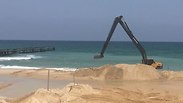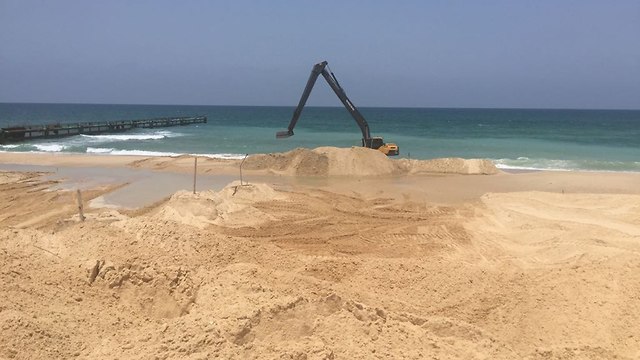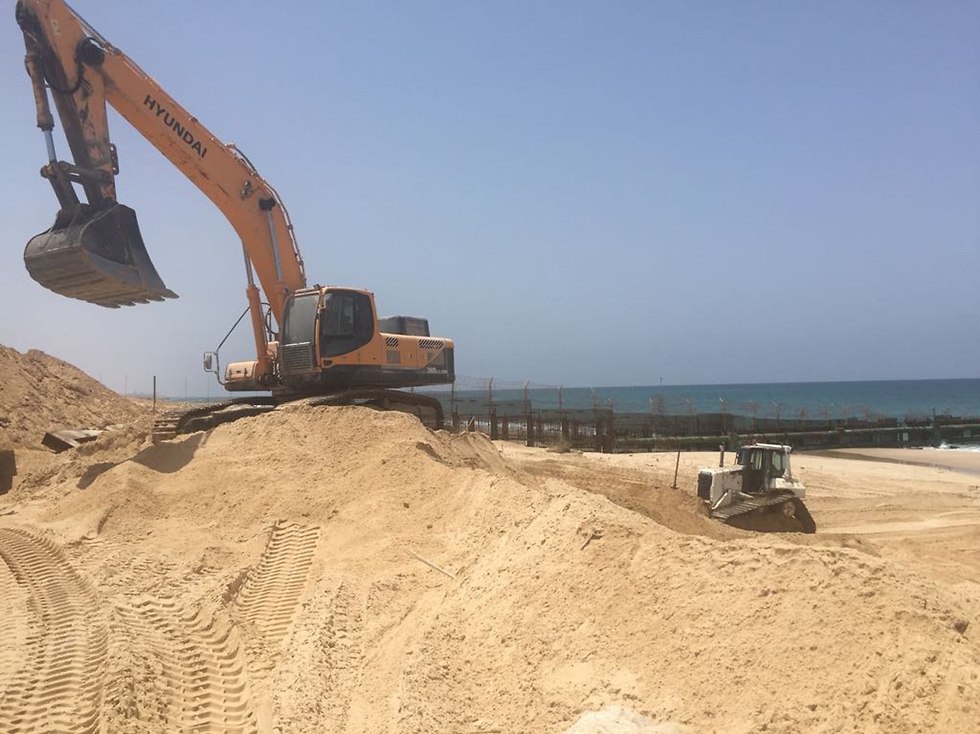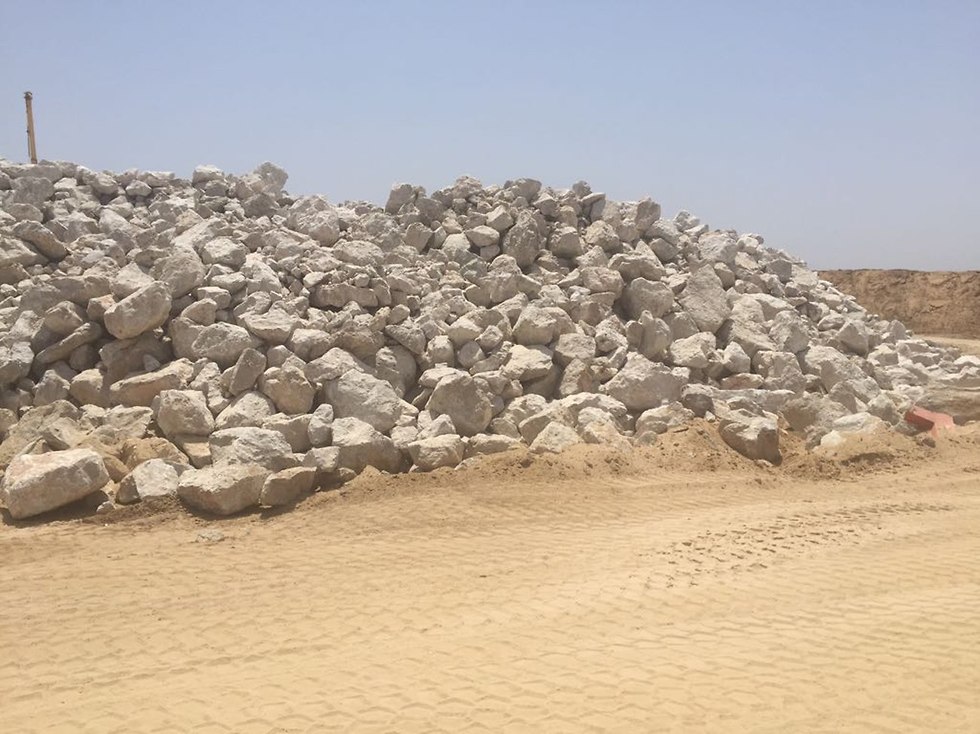
Construction of the naval barrier
צילום: דוברות משרד הביטחון
Israel begins construction of Gaza sea barrier
Naval barrier designed to thwart a potential infiltration of a Hamas terror cell into Israel though the Gaza-Israel maritime border expected to be fully built by the end of 2018; Def. Min. Lieberman: 'This is an additional setback for Hamas, which has lost another strategic capability that it has invested massive amounts in developing.'
Construction of a world-first marine barrier on the northern Gaza Strip border commenced Sunday by the Defense Ministry, with dozens of tons of building materal being hauled to Zikim Beach by heavy-duty vehicles.
The barrier will be erected on top of a breakwater constructed between Zikim Beach and Gaza Beach, and is designed to serve as an "impregnable breakwater" that will be built to withstand hostile weather conditions at sea and to serve both beach goers and Israel's defense establishment for years to come.
It is expected to be fully completed by the end of the year.
The obstacle will consist of three components: an underwater level, topped by a layer of stone and a barbed wire fence along the crest. The entire barricade itself will be surrounded by another fortified fence.
The decision to erect the naval barricade was made after a terrorist cell managed to infiltrate into Israel by sea from the strip during Operation Protective Edge in 2014.
Since the operation, an underwater sensor system has been spread along the maritime border with the northern Gaza Strip, enabling the IDF to spot divers and swimmers in the area. It is tested every few weeks by army exercises and experiments that improve its capabilities.
The threat of breaches from the coastal enclave, which is controlled by the Hamas terror group, has increased recently with mounting tensions between Hamas and Israel over the bloody events on the Gaza border, which saw protesters, many of them Hamas operatives, lose their lives while attempting to breach the border's security fence in protest of Israel's blockade of the strip.
Defense Minister Avigdor Liberman said the barrier would deny Hamas the "strategic capability" of using the sea to infiltrate Israel.
"Today we began setting up a sea barrier, the only one of its kind in the world, which will block the possibility of infiltration from Gaza to Israel via the sea," Liberman said in a statement. "This is an additional setback for Hamas, which has lost another strategic capability that it has invested massive amounts in developing. We will continue to protect the citizens of Israel with might and sophistication."
In recent years, Hamas has invested tens of millions of shekels in its naval force, consisting on hundreds of naval commandos, who train frequently on the beaches of the Gaza Strip and are equipped with advanced diving equipment.
Like Israel's navy, Hamas also drew conclusions from the events of Operation Protective Edge with regard to its commando force and developed a combat doctrine designed to try to circumvent the IDF's underwater detection systems.
Through the maritime border, Hamas can reach the coast of Ashkelon from where it can attack nearby strategic sites, such as the Yam Tethys gas rig and the Rutenberg Power Station, and potentially cripple Israel's infrastructure.
The new naval barrier will in fact continue the 64-kilometer underground barrier along the Gaza Strip border, from the Einav settlement to the Kerem Shalom border crossing.













